Hyundai Kona vs Kia Picanto – Differences & prices compared
Compare performance, boot space, consumption and price in one view.
Find out now: which car is the better choice for you – Hyundai Kona or Kia Picanto?
The Hyundai Kona (SUV) comes with a Electric, Petrol or Full Hybrid engine and Automatic or Manuel transmission. In comparison, the Kia Picanto (Hatchback) features a Petrol engine with Manuel or Automatic transmission.
When it comes to boot capacity, the Hyundai Kona offers 466 L, while the Kia Picanto provides 255 L – depending on how much space you need. If you’re looking for more power, decide whether the 218 HP of the Hyundai Kona or the 68 HP of the Kia Picanto suits your needs better.
In terms of consumption, the values are 14.60 kWh4.60 L per 100 km for the Hyundai Kona, and 5.60 L for the Kia Picanto.
Price-wise, the Hyundai Kona starts at 23100 £, while the Kia Picanto is available from 15300 £. Compare all the details and find out which model fits your lifestyle best!
Hyundai Kona
The Hyundai Kona blends a bold design with a versatile interior, making it a standout choice in the compact SUV market. Its crisp handling and responsive steering provide an engaging driving experience, whether in the city or on the open road. The vehicle also offers a range of features designed to enhance comfort and connectivity, ensuring a pleasurable journey for both driver and passengers.
details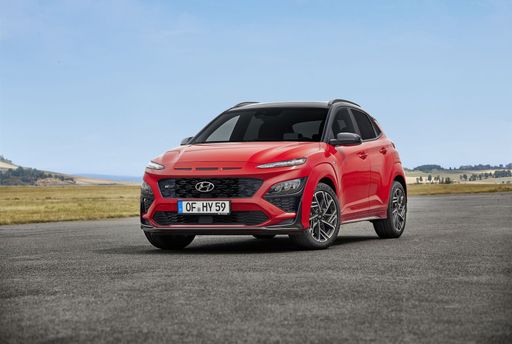 @ hyundai.news
@ hyundai.news
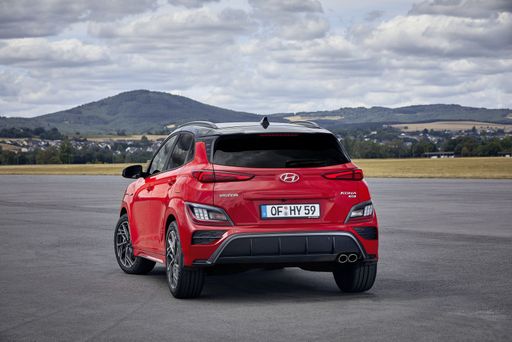 @ hyundai.news
@ hyundai.news
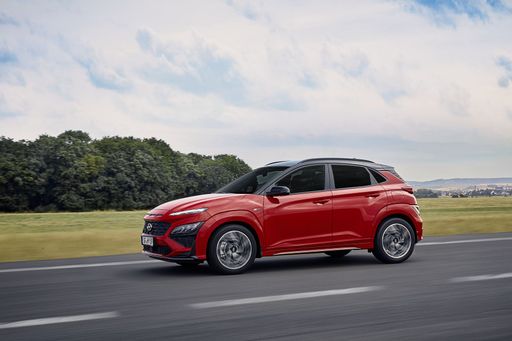 @ hyundai.news
@ hyundai.news
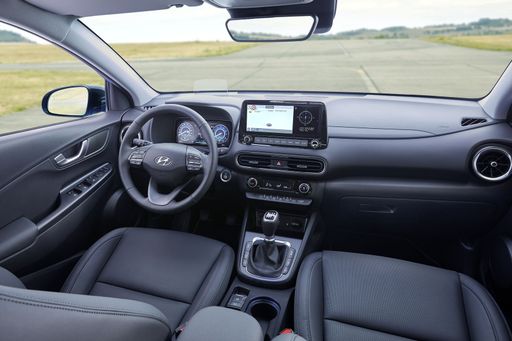 @ hyundai.news
@ hyundai.news
Kia Picanto
The Kia Picanto is a compact city car that combines practicality with a stylish design, making it an appealing option for urban drivers. Its cleverly designed interior maximises space, providing ample room for passengers and luggage despite its small footprint. With its efficient fuel consumption and easy manoeuvrability, the Picanto is well-suited for navigating through bustling city streets.
details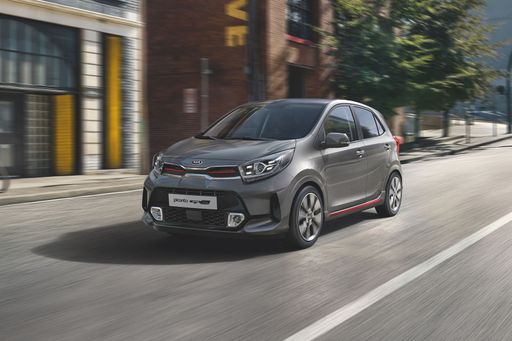 @ press.kia.com
@ press.kia.com
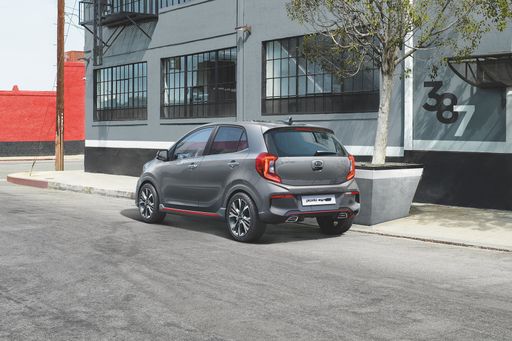 @ press.kia.com
@ press.kia.com
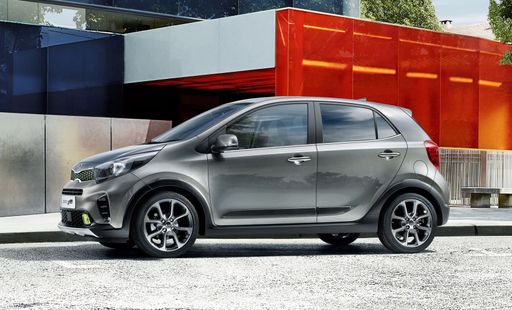 @ press.kia.com
@ press.kia.com
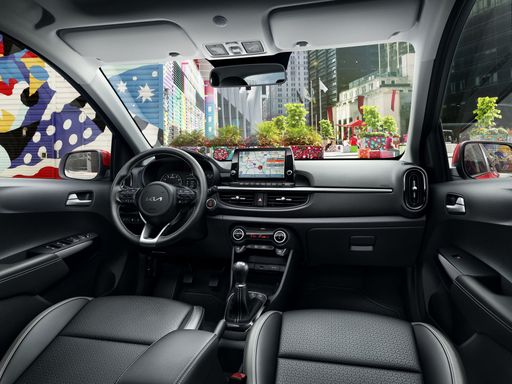 @ press.kia.com
@ press.kia.com

|

|
|
|
|
Costs and Consumption |
|
|---|---|
|
Price
23100 - 41600 £
|
Price
15300 - 19300 £
|
|
Consumption L/100km
4.6 - 7 L
|
Consumption L/100km
5.6 - 5.9 L
|
|
Consumption kWh/100km
14.6 - 16.8 kWh
|
Consumption kWh/100km
-
|
|
Electric Range
377 - 514 km
|
Electric Range
-
|
|
Battery Capacity
1.3 - 65.4 kWh
|
Battery Capacity
-
|
|
co2
0 - 163 g/km
|
co2
127 - 135 g/km
|
|
Fuel tank capacity
38 - 47 L
|
Fuel tank capacity
35 L
|
Dimensions and Body |
|
|---|---|
|
Body Type
SUV
|
Body Type
Hatchback
|
|
Seats
5
|
Seats
4 - 5
|
|
Doors
5
|
Doors
5
|
|
Curb weight
1370 - 1773 kg
|
Curb weight
1124 - 1131 kg
|
|
Trunk capacity
466 L
|
Trunk capacity
255 L
|
|
Length
4350 - 4385 mm
|
Length
3605 mm
|
|
Width
1825 mm
|
Width
1595 mm
|
|
Height
1580 - 1585 mm
|
Height
1485 mm
|
|
Payload
420 - 490 kg
|
Payload
253 - 332 kg
|
Engine and Performance |
|
|---|---|
|
Engine Type
Electric, Petrol, Full Hybrid
|
Engine Type
Petrol
|
|
Transmission
Automatic, Manuel
|
Transmission
Manuel, Automatic
|
|
Transmission Detail
Manual Gearbox, Dual-Clutch Automatic
|
Transmission Detail
Manual Gearbox, Automated Manual
|
|
Drive Type
Front-Wheel Drive, All-Wheel Drive
|
Drive Type
Front-Wheel Drive
|
|
Power HP
115 - 218 HP
|
Power HP
68 HP
|
|
Acceleration 0-100km/h
7.8 - 11.9 s
|
Acceleration 0-100km/h
14.6 - 17.2 s
|
|
Max Speed
162 - 210 km/h
|
Max Speed
160 - 162 km/h
|
|
Torque
200 - 265 Nm
|
Torque
96 Nm
|
|
Number of Cylinders
3 - 4
|
Number of Cylinders
3
|
|
Power kW
85 - 160 kW
|
Power kW
50 kW
|
|
Engine capacity
998 - 1598 cm3
|
Engine capacity
998 cm3
|
General |
|
|---|---|
|
Model Year
2024 - 2025
|
Model Year
2025
|
|
CO2 Efficiency Class
A, D, C, E, F
|
CO2 Efficiency Class
D
|
|
Brand
Hyundai
|
Brand
Kia
|
Hyundai Kona
The Hyundai Kona: A Comprehensive Overview
The Hyundai Kona has established itself as a standout in the compact SUV segment, blending innovation with performance and style. As the automotive world moves towards more sustainable and efficient options, the Kona offers a variety of powertrains, from traditional petrol engines to full hybrids and all-electric models.
Powertrain Options and Performance
The Hyundai Kona's powertrain choices cater to a wide range of preferences. For petrol enthusiasts, the Kona offers a 1.0L T-GDI engine, delivering 100 PS, and a more robust 1.6L T-GDI variant with up to 170 PS. Those looking for efficiency without sacrificing power can consider the full hybrid model, offering 129 PS and an impressive consumption of 4.5 L/100km.
For a greener option, the all-electric Kona provides a compelling case. With battery capacities of up to 65.4 kWh, the electric Kona offers power outputs of 156 to 218 PS, and efficiencies as low as 14.6 kWh/100km, enabling an electric range of up to 513 km.
Technical Specifications and Innovations
Built on a robust platform, the Kona delivers versatility and reliability. With a choice between manual or dual-clutch automatic gearboxes, along with options for front-wheel or all-wheel drive, the Kona ensures a tailored driving experience. The handling is enhanced by the car's lightweight construction, balancing a 1370 to 1773 kg curb weight with dynamic performance.
The Kona's design doesn't compromise cargo space for style; it offers a generous 466 L boot capacity. With a relatively compact body, measuring 4350 to 4385 mm in length, the Kona easily navigates urban environments while still commanding a strong road presence with its 1825 mm width.
Efficiency and Eco-Friendliness
Hyundai is committed to reducing emissions, as evidenced by the Kona's CO2 efficiency ratings, which range from class A for electric models to class D for some higher-performance petrol variants. The focus on reducing environmental impact without sacrificing driving pleasure is notable throughout the Kona range.
Costing and Value
The Hyundai Kona offers commendable value for money. Pricing starts at €26,400 and reaches up to €50,690, depending on the chosen configuration. The monthly running costs range from €956 to €1090, with a cost per kilometre of 38.3 to 43.6 cents, making it a competitive option in its class.
Conclusion: Modern, Efficient, and Versatile
The Hyundai Kona stands as a testament to Hyundai's commitment to innovation, efficiency, and practicality. Whether you are inclined towards a traditional combustion engine, a hybrid for a balance of power and efficiency, or a full electric model for maximum eco-friendliness, the Kona provides a tailored solution for each unique driver preference.
Kia Picanto
Compact Versatility: An Overview of the Kia Picanto
The Kia Picanto, with its chic and compact design, is a staple in urban landscapes across the globe. Offering a deft blend of efficiency, style, and functionality, the Picanto continues to evolve, catering to the demands of the modern driver. With the 2024 model year, Kia reaffirms its commitment to providing a small car that doesn't compromise on quality or innovation.
Engine Performance and Fuel Efficiency
The Kia Picanto comes with several engine options tailored to different needs, featuring both manual and automatic transmissions. The engines range from a 1.0-litre 3-cylinder to a 1.2-litre 4-cylinder, providing a power output between 63 and 79 PS. This allows the Picanto to offer a versatile driving experience that suits both urban and suburban environments. Fuel consumption is impressively low, with figures ranging between 5.2 to 5.7 litres per 100 km, emphasising the car's eco-friendly credentials.
Innovative Design and Technology
In terms of design, the Picanto boasts sleek lines and a modern silhouette. Although it's a five-door hatchback, the car maintains its compactness with dimensions of 3605 mm in length, 1595 mm in width, and 1485 mm in height. Inside, the Picanto surprises with its clever use of space, providing a comfortable cabin for up to five passengers and a boot capacity of 255 litres.
The Picanto is equipped with advanced technology aimed at enhancing the driver's experience and safety. Available equipment lines such as Edition 7, Vision, and GT Line offer varying levels of features, including improved infotainment systems and driver assistance technologies. These innovations make the Picanto not just economical, but also a smart choice for tech-savvy car buyers.
Safety Features and Driving Comfort
Safety has always been a priority for Kia, and the Picanto is no exception. The 2024 model comes equipped with a suite of safety features designed to protect its occupants. From enhanced structural integrity to available driver assist systems, Kia ensures that driving the Picanto is both secure and enjoyable. The Picanto manages speed efficiently, with a top range between 145 to 159 km/h, and provides a torque of 95 to 115 Nm, aiding in confident handling and acceleration.
Environmental and Economic Benefits
With CO2 emissions ranging from 118 to 130 g/km, the Picanto holds a D efficiency class. This is a significant factor for environmentally conscious drivers who still want to enjoy an efficient urban vehicle. The monthly cost of ownership is between €681 and €789, with a cost per kilometre of 27.2 to 31.6 cents, positioning the Picanto as an economically wise choice for budget-conscious drivers.
The Final Verdict
Overall, the Kia Picanto remains a formidable contender in the compact car segment, thanks to its combination of practicality, innovation, and efficiency. Whether navigating the bustling city streets or heading out on a weekend road trip, the Picanto proves to be a reliable and economical partner. With its modern styling and cutting-edge technology, it stands as a testament to Kia’s ability to adapt and thrive in the ever-evolving automotive landscape.
Which drive types are available for the Hyundai Kona?
Available as Front-Wheel Drive or All-Wheel Drive.
The prices and data displayed are estimates based on German list prices and may vary by country. This information is not legally binding.
